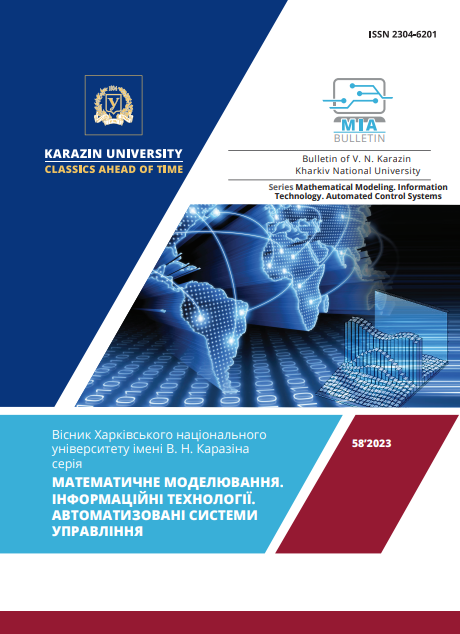The technique of modeling Cyberphysical systems using Coalgebra
Abstract
Relevance. Presently, we observe a rapid pace of development in information technologies, the implementation of which results in a broad percentage of automation in manufacturing processes. In most cases, this goal can be achieved by integrating Cyber-Physical Systems (CPS) into production processes. The primary feature of such information systems is the integration of various sensors and actuators (the physical component of the system) into a computational system performing operational and control functions (the cybernetic component of the system). These systems require a high level of operational reliability, demanding careful analysis of the behavior specification of such systems to identify critical operational states from their designers.
Goal. This work explores the possibility of utilizing formal models to describe system behavior using Coalgebra. Such an approach provides the opportunity to more effectively avoid errors in analyzing the behavior of Cyber-Physical Systems during the design stage. This investigation demonstrates the methodology of modeling distributed types of dynamic systems using Coalgebra.
Research methods. The main types of dynamic systems in this study are abstracted into models based on Coalgebra.
The results. Approaches to modeling the most common types of dynamic systems, namely, Deterministic Systems, Transition Systems, and Stochastic Systems, have been developed. Models are constructed using category theory and Coalgebra, ensuring the necessary high level of abstraction. Such an approach enables working not with individual systems but with entire classes of similar systems.
Conclusions. The research results have demonstrated fundamental methods for creating models of basic dynamic systems using Coalgebra. The findings of this study can be beneficial for addressing the challenge of modeling dynamic systems as a basis for further research.
Downloads
References
/References
Y. Liu, Y. Peng, B. Wang, S. Yao and Z. Liu, "Review on cyber-physical systems," in IEEE/CAA Journal of Automatica Sinica, vol. 4, no. 1, pp. 27-40, Jan. 2017, doi: 10.1109/JAS.2017.7510349. https://ieeexplore.ieee.org/abstract/document/7815549
Rasim Alguliyev, Yadigar Imamverdiyev, Lyudmila Sukhostat, Cyber-physical systems and their security issues, Computers in Industry, Volume 100, Pages 212-223, 2018, https://doi.org/10.1016/j.compind.2018.04.017. https://sciencedirect.com/science/article/abs/pii/S0166361517304244
Hasuo, I. Metamathematics for Systems Design. New Gener. Comput. 35, 271–305 (2017). https://doi.org/10.1007/s00354-017-0023-1. https://link.springer.com/article/10.1007/s00354-017-0023-1
Georgios Bakirtzis, Cody H. Fleming, and Christina Vasilakopoulou. 2021. Categorical Semantics of Cyber-Physical Systems Theory. ACM Trans. Cyber-Phys. Syst. 5, 3, Article 32 (July 2021), 32 pages. https://doi.org/10.1145/3461669. https://dl.acm.org/doi/abs/10.1145/3461669
Benjamin Lion, Farhad Arbab, Carolyn Talcott, A formal framework for distributed cyber-physical systems, Journal of Logical and Algebraic Methods in Programming, Volume 128, 2022, 100795, https://doi.org/10.1016/j.jlamp.2022.100795. https://www.sciencedirect.com/science/article/pii/S2352220822000487
Y. Liu, Y. Peng, B. Wang, S. Yao and Z. Liu, "Review on cyber-physical systems," in IEEE/CAA Journal of Automatica Sinica, vol. 4, no. 1, pp. 27-40, Jan. 2017, doi: 10.1109/JAS.2017.7510349. https://ieeexplore.ieee.org/abstract/document/7815549
Rasim Alguliyev, Yadigar Imamverdiyev, Lyudmila Sukhostat, Cyber-physical systems and their security issues, Computers in Industry, Volume 100, Pages 212-223, 2018, https://doi.org/10.1016/j.compind.2018.04.017. https://sciencedirect.com/science/article/abs/pii/S0166361517304244
Hasuo, I. Metamathematics for Systems Design. New Gener. Comput. 35, 271–305 (2017). https://doi.org/10.1007/s00354-017-0023-1. https://link.springer.com/article/10.1007/s00354-017-0023-1
Georgios Bakirtzis, Cody H. Fleming, and Christina Vasilakopoulou. 2021. Categorical Semantics of Cyber-Physical Systems Theory. ACM Trans. Cyber-Phys. Syst. 5, 3, Article 32 (July 2021), 32 pages. https://doi.org/10.1145/3461669. https://dl.acm.org/doi/abs/10.1145/3461669
Benjamin Lion, Farhad Arbab, Carolyn Talcott, A formal framework for distributed cyber-physical systems, Journal of Logical and Algebraic Methods in Programming, Volume 128, 2022, 100795, https://doi.org/10.1016/j.jlamp.2022.100795. https://www.sciencedirect.com/science/article/pii/S2352220822000487




